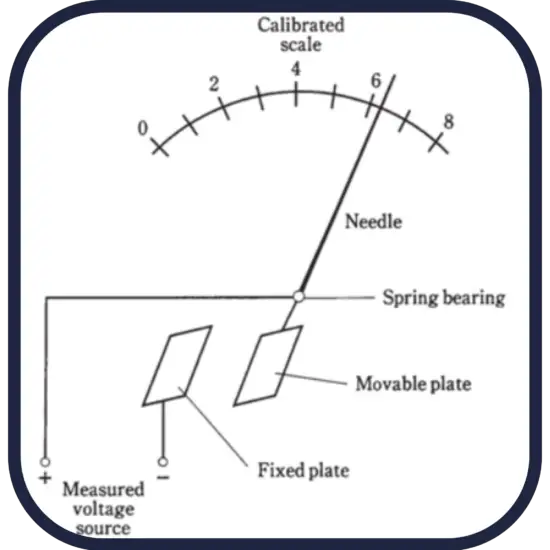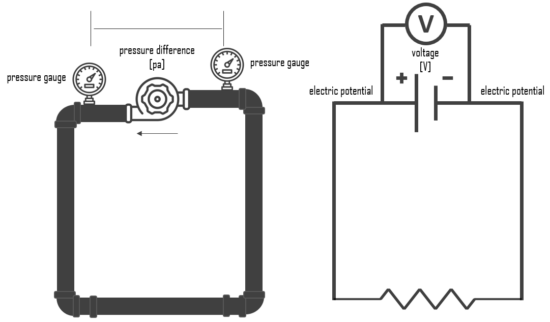30-second summary
Electrostatic Type Voltmeter
An electrostatic voltmeter is the only voltmeter to measure voltage directly rather than by the effect of current. This voltmeter is used to measure large electrical potentials without making physical contact and so there is no electrostatic charge transfer or loading of the voltage source.
An electrostatic voltmeter uses the attraction force between two charged surfaces to create a deflection of a pointer directly calibrated in volts. A static electrical field is used to generate the deflecting torque. Since the attraction force is the same regardless of the polarity of the charged surfaces (as long as the charge is opposite), the electrostatic voltmeter can measure DC voltages of either polarity.
Other types of voltmeters are:

Voltmeter and Hydraulic Analogy
The hydraulic analogy, or the electric-fluid analogy, is a widely used analogy between hydraulics and electricity, which is a useful tool for teaching and for those who are struggling to understand how circuits work. it can also be applied to heat transfer problems.
Since electric current is invisible and the processes in play in electronics are often difficult to demonstrate, the various electronic components are represented by hydraulic equivalents. The relationship between voltage and current is defined (in ohmic devices like resistors) by Ohm’s law. Ohm’s Law is analogous to the Hagen–Poiseuille equation, as both are linear models relating flux and potential in their respective systems.
Electricity (as well as heat) was originally understood to be a kind of fluid, and the names of certain electric quantities (such as current) are derived from hydraulic equivalents.
Voltage is like the pressure difference that pushes water through the hose. It is measured in volts (V). This model assumes that the water is flowing horizontally so that the force of gravity can be ignored. So that voltmeter is equivalent to pressure difference measurement.


